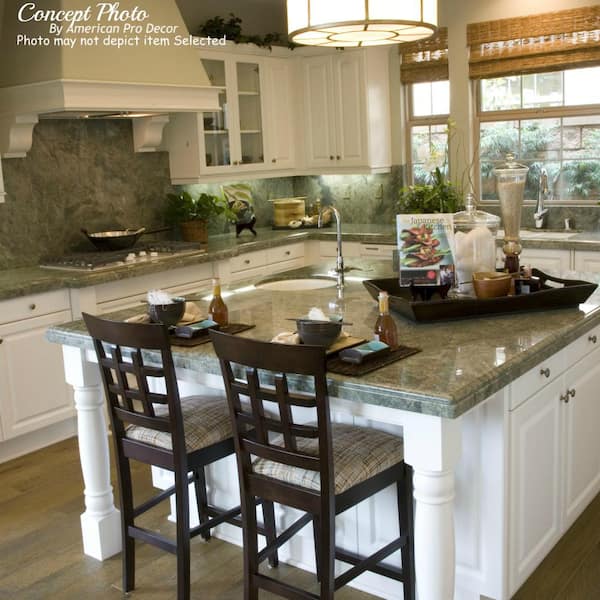Durable and Trendy Options for High-Quality Legs For Kitchen Island
Crucial Variables to Take Into Consideration When Picking Legs For Kitchen Area Island
Choosing the suitable legs for a kitchen area island involves a cautious assessment of multiple elements that can substantially influence both performance and aesthetic allure. Amongst these, the option of product plays a critical role in making sure longevity, while the style has to complement the existing design. Factors to consider such as elevation and weight support are essential for stability and convenience. As we discover these aspects, it ends up being clear that each decision can have far-reaching implications for the overall kitchen area experience. What nuances should be taken into consideration in each of these classifications to achieve the excellent equilibrium?
Product Options
When selecting legs for a kitchen area island, recognizing the various product alternatives is important for attaining both visual appeal and architectural honesty (Legs For Kitchen Island). The choice of material substantially affects not only the toughness of the island but also its general layout and capability
Steel legs, usually made from stainless steel or functioned iron, add a commercial and contemporary feeling while making certain durability and security. These products are immune to use and can support considerable weight, making them optimal for larger islands.
Another option is crafted products, like MDF or plywood, which can be a lot more economical while still using a series of finishes. They might not give the exact same level of security as strong wood or steel. Legs For Kitchen Island. Last but not least, products such as acrylic or glass can create a modern appearance, though they may require added support to ensure security.
Inevitably, the choice of material for cooking area island legs ought to align with the wanted functionality and the total style of the kitchen.
Design and Design

When thinking about design, the shape and surface of the legs are important. Conical legs can give a feeling of agility and style, while thicker, extra durable legs can share toughness and security. In addition, the coating-- be it repainted, discolored, or natural-- ought to enhance the cabinetry and kitchen counter products to produce a unified look.
Additionally, the style of the legs can also reflect individual preference. Personalized or ornamental legs, such as those featuring elaborate carvings or unique geometric forms, can function as focal factors, including personality and individuality to the cooking area. Inevitably, the best option will certainly not only improve capability yet likewise elevate the visual charm, making the kitchen area island a standout feature of the home.
Elevation Factors To Consider
Selecting the ideal height for cooking area island legs is important, as it straight impacts both capability and comfort. The common elevation for a kitchen area island commonly ranges from 36 to 42 go to these guys inches, straightening with common counter top elevations.

It is likewise important to account for customers' elevations and preferences. Tailoring the elevation can guarantee a comfy experience for all household members, making the cooking area island a much more practical and enjoyable room.
Weight Support
Ensuring ample weight support for cooking area island legs is important for both safety and security and performance. The kitchen island usually serves multiple functions, consisting of food prep work, eating, and extra storage space, necessitating a durable support framework. When picking legs, it is important to consider the general weight ability required based upon the island's intended use and the products that will be put on it.
The selection of material for the legs plays a considerable duty in their weight-bearing abilities. Strong timber, metal, and durable compounds generally supply superior stamina contrasted to lighter products. Additionally, the style of the legs-- whether they are directly, tapered, or have a pedestal kind-- can influence their capability to disperse weight properly across the structure.
Additionally, the leg positioning should be tactically prepared to boost security. Legs positioned at the corners or with a larger base can better sustain larger lots. Always seek advice from the supplier's specifications concerning tons limitations to make sure that the legs can maintain the desired weight without endangering safety. In summary, selecting kitchen island legs with sufficient weight support is necessary for developing a useful and secure cooking area.
Setup and Maintenance
Correct installation and upkeep of kitchen island legs are critical for making sure longevity and security. This frequently entails securing the legs to the island base making use of suitable bolts, making sure that the legs are degree and straightened.
Once set up, routine upkeep is required to maintain the integrity and advice appearance of the legs - Legs For Kitchen Island. For wood legs, periodic cleansing with a wet cloth and application of ideal wood polish can protect against moisture damage and keep their finish. Metal legs might require a gentle cleansing remedy to remove oil and grime, followed by a dry towel to stop corrosion formation
Furthermore, evaluate the legs routinely for signs of wear or damages, such as splits or loose joints. Tightening up screws or screws as required can also prolong the life expectancy of the legs. By sticking to these setup and upkeep methods, homeowners can guarantee that their kitchen island remains durable and visually appealing for many years to find.
Final Thought

Visual coherence is critical in choosing the design and layout of legs for a kitchen island, as these elements considerably affect the total ambiance of the space. Tapered legs can offer a sense of lightness and sophistication, while thicker, extra durable legs can convey strength and stability.Choosing the suitable height for kitchen island legs is important, as it straight affects both performance and convenience. In recap, choosing kitchen area island legs with appropriate weight assistance is crucial for developing a useful and secure cooking area.
In final thought, choosing legs for a kitchen island necessitates careful consideration of various factors, including product alternatives, style, height, weight support, and installment.